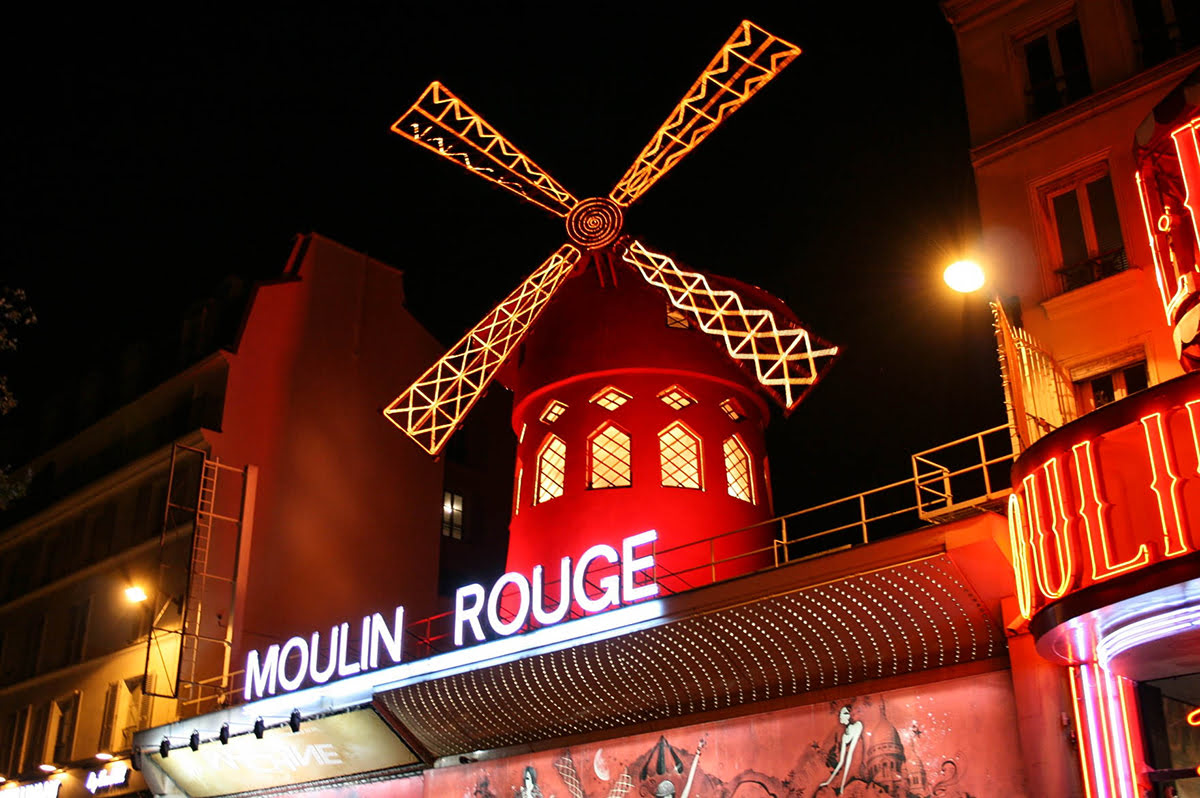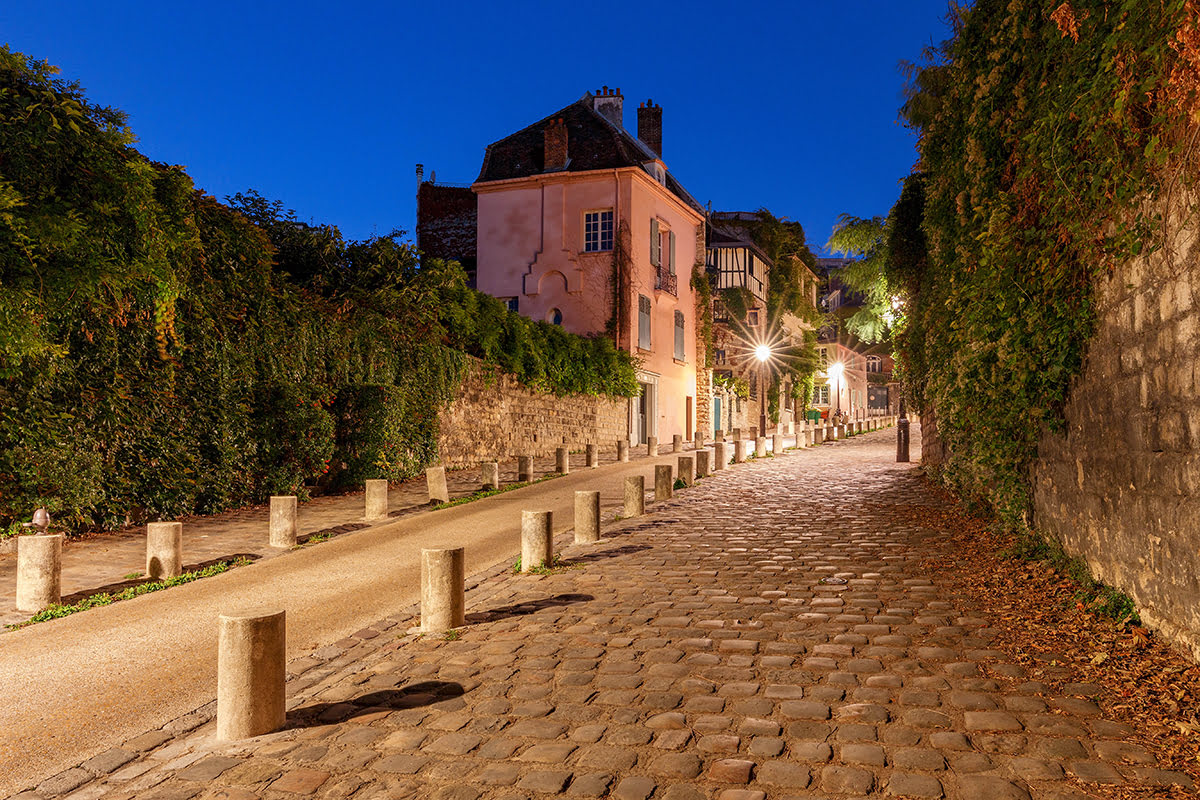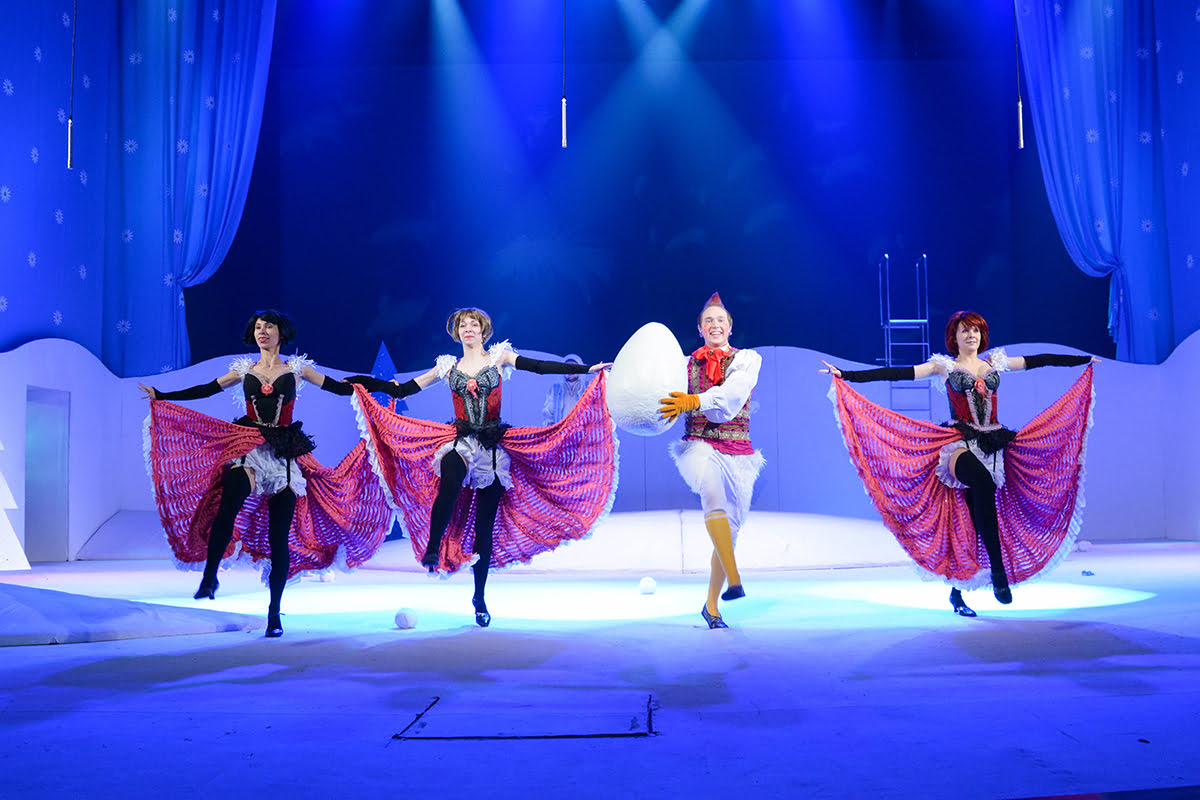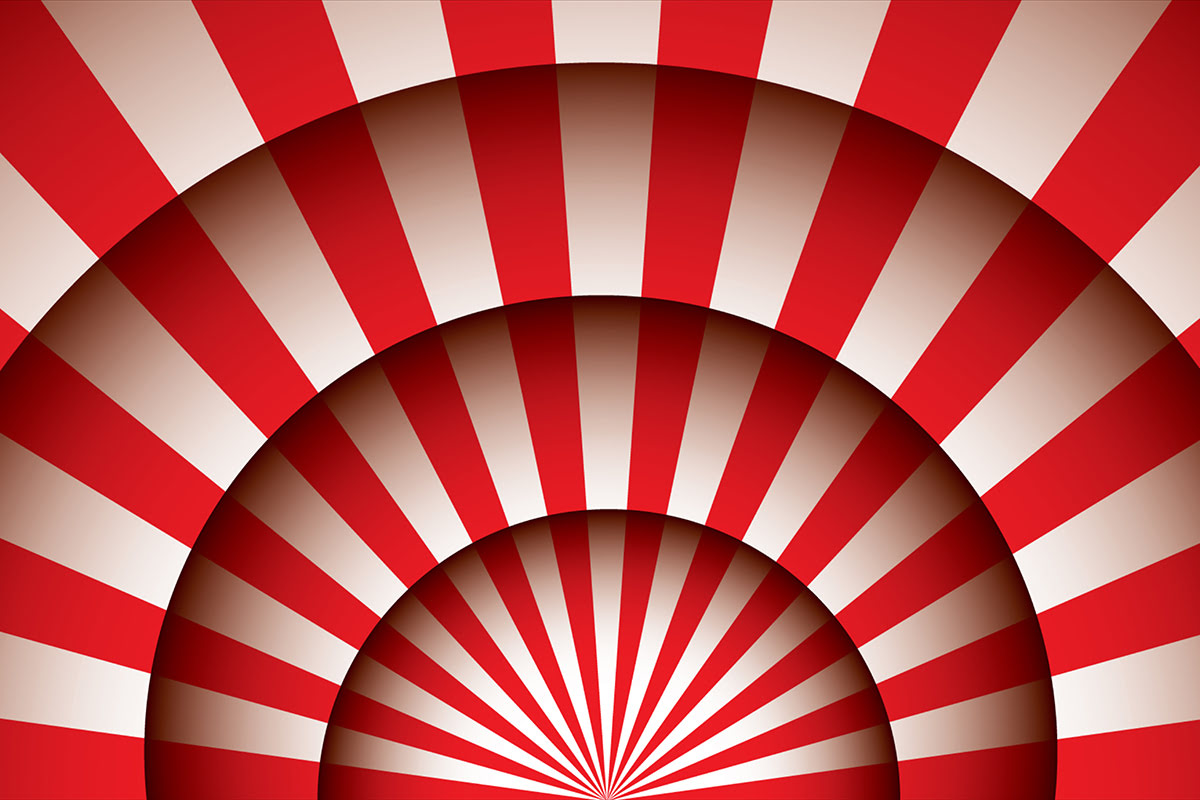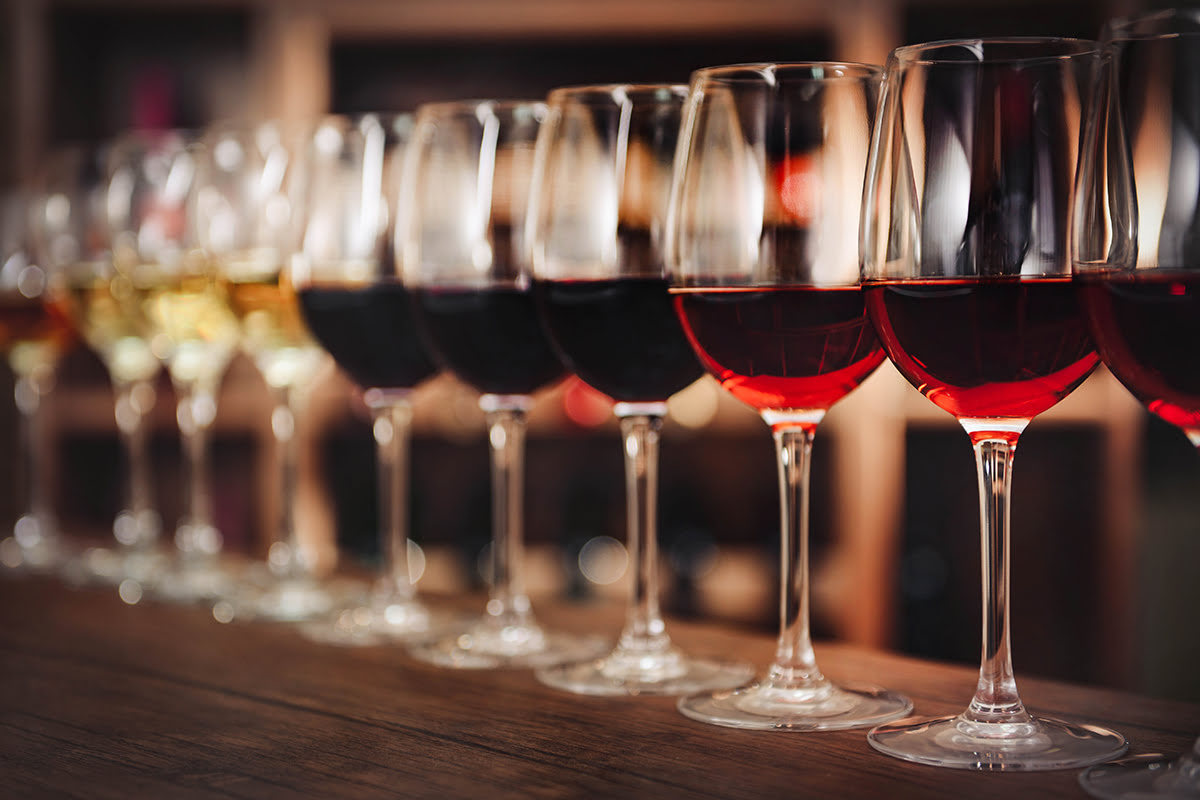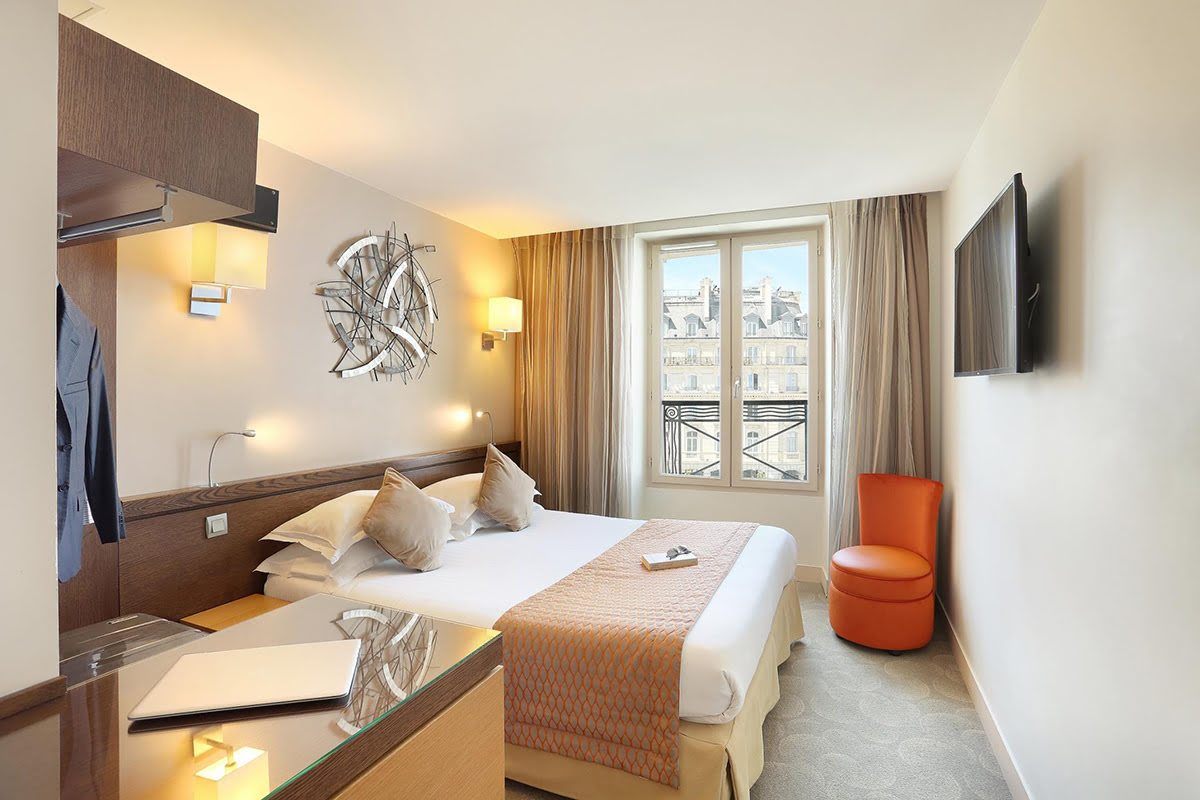Moulin Rouge Paris: The World’s Most Prestigious Cabaret

An iconic Paris cabaret, the Moulin Rouge has a storied history stretching back over a century. Most notably, it was the birthplace of the iconic can-can dance. Visitors from around the world come every day to take in the spectacular show. Identified by its red windmill, the cabaret’s building is itself a popular tourist landmark. Whether you have tickets to a show or you are just stopping by on your way up the Montmartre hill, here is your guide to everything you need to know about the Moulin Rouge.
Visiting the Moulin Rouge, an iconic Paris landmark
The Moulin Rouge is located in the Pigalle district, at the very bottom of Montmartre. If you’re planning a visit to the Moulin Rouge, then the closest Paris Metro Station to get off at is Blanche Station on Metro Line 2. The station lies underneath the Boulevard de Clichy, which runs between the city’s 9th arrondissement and 18th arrondissement. It is just a quick, 1-minute walk to the Moulin Rouge from Blanche Station.
The Moulin Rouge red windmill
You’ll know the Moulin Rouge as soon as you see it. The building is instantly recognizable by its bright red exterior, and especially by the large red windmill on its roof. It may seem peculiar to see a windmill in the middle of the bustling city today, but the Moulin Rouge windmill actually harkens back to how the area would have looked in the past. Before it was the trendy Paris neighborhood that it is today, Montmartre was a small village with around 15 windmills dotted throughout it. These windmills were used to press grapes and grind flour. On top of being a nostalgic nod to a past era, the Moulin Rouge windmill is also painted red to signify passion and romance.
Paris’s first electric-powered building
Another feature of the Moulin Rouge building that you will likely notice is how well-lit the exterior is. While this serves to draw attention to the building in the modern day, the electrically powered facade had an even bigger impact back in the day, when it was one of the very first buildings in Paris to use electricity. Designed by Adolphe Leon Willette, the Moulin Rouge quickly became an emblem of the city. Every night when the shows began, the building lit up like a beacon to welcome guests and pique the interests of passersby.
Montmartre: A Parisian village inside the big city
Whether you are seeing a show at the Moulin Rouge or just stopping by for some sightseeing, a trip to this part of the city presents a great opportunity to check out Montmartre. This 430-foot-high hill in the northern section of Paris is full of traditional charm and famous for the gleaming white Sacre-Coeur Basilica that sits at its apex. You have the option of taking a funicular up to the top of the hill or stretching your legs a bit and enjoying the Montmartre area. This is a particularly great place in the city to do some shopping and pick up everything from brand name fashion to handcrafted local goods. One of the top shopping streets in the area is Rue Lepic.
A brief history of the Moulin Rouge
The Moulin Rouge first opened its doors on October 6, 1889. It was co-founded by two businessmen named Joseph Oller and Charles Zidler. Though no one could tell that the Moulin Rouge would eventually become the most famous cabaret in the world, Oller and Zidler very quickly proved that they had their fingers on the pulse of what the public was looking for. They envisioned the cabaret as a place where the Paris rich could come and let loose in a fashionable part of town so close to the iconic Montmartre hill.
The opening night atmosphere was rambunctious and festive. People from all walks of life showed up to celebrate. Businessmen, workers, the middle class, artists, and foreigners rubbed shoulders with one another and, side-by-side, discovered the extravagant new dance hall. They were treated to what must have been an unforgettable sight of the large dance floor, the galleries, and the dazzling mirrors. At that time, the Moulin Rouge also had a garden that housed a gigantic decorative elephant. Ladies could even take donkey rides! Opening night would be remembered as one big joyous party.
Influence and inspiration behind the Moulin Rouge
The Moulin Rouge was truly a product of its time. It was built during a period of optimism, peace, and industrial progress known as the Belle Epoque. Montmartre served as a hub for artists and the Eiffel Tower had just been constructed, further instilling a sense of progress and optimism among the people. Paris was also the host of the Universal Exhibition that year.
There was a cultural exuberance for new experiences and a general passion and light-heartedness permeated society. Social barriers were loosening as the industrial revolution promised a new and better life for everyone. This made people more open to artistic creativity than they had been during the previous period, which had been marked by war and ridged classicism. Many also point to the influence of a movement known as Japonism, which saw the introduction of Japanese artistic motifs into French art and into the earliest cabarets.
Growing popularity and the early years
It didn’t take long for the Moulin Rouge to explode in popularity. The public discovered and promptly embraced the new cancan dance, which was performed during the cabaret show’s grand finale. Its boisterous rhythm and somewhat racy moves certainly demanded attention, and the dance spread across Europe. The cancan actually grew out of an earlier dance known as the quadrille, which had been created in 1850 by famed dancer Celeste Mogador. The cancan likewise brought lasting fame to many of the women who performed the dance at the Moulin Rouge. One such woman was Louise Weber, who also went by the stage name La Goulue and who was also called the Queen of Montmartre. The Moulin Rouge itself was wildly successful during its first decade, each unforgettable night following the next in a flurry of performances.
Change and transition at the turn of the century
Unfortunately, the popularity of the Moulin Rouge waned after a few years and the last show of its early era was held in 1902. The building was turned into a concert theatre under the direction of M. Paul-Louis Flers and, until World War I, the main shows held there were operetta performances. The operettas were quite scandalous for their time. After World War I, the Moulin Rouge began hosting a new show called “New York- Montmartre,” a Broadway-style show that incorporated American elements and became popular among Parisians. However, the growing popularity of cinema once again caused interest in the shows to wane. During World War II, the Moulin Rouge went through another period of change and was transformed into a modern dance club.
A return to the glory days
It didn’t take long after World War II for the Moulin Rouge to begin regaining its former glory. In 1951, it was purchased by Georges France, who renovated the building in order to make it suitable for spectacular cabaret performances it had been so famous for half a century earlier. The “new” Moulin Rouge was inaugurated by the French president Vincent Auriol. This was the first step towards establishing the cabaret as a place where anyone could come to enjoy themselves for the evening. The cabaret shows resumed and the building was even fitted with a kitchen. This marked the beginning of the dinner show and quickly turned the Moulin Rouge into one of the city’s most popular attractions once again. People flocked to it from all over the world. Even Elvis Presley visited on multiple occasions.
Moulin Rouge in the modern day
The beloved cabaret was back and in a big way. In 1962, it came under the management of Jacki Clerico. Among his most memorable contributions to the cabaret was the installation of a giant aquarium where nude dancers could swim around like mermaids in an aquatic ballet. Clerico is also known for starting the tradition of selecting only names that begin with the letter “F” for the cabaret’s shows, such as Frou Frou, Fantastic, and Formidable. The Moulin Rouge had truly cemented its place in history and celebrated its 100th birthday in 1988 with a large party that included everyone from famous show business stars to crowned heads of state. Today, the cabaret proudly welcomes almost 600,000 visitors every year.
The Moulin Rouge show
Feerie has been the resident stage show at the Moulin Rouge since December 23, 1999, and it remains as well-loved today as it was when it first premiered. Each show lasts for about two hours and it is a marvelous spectacle to behold, sweeping guests away to a magical world for the evening. There are five scenes in total, each with its own unique story and theme.
The Feerie performance is put on by a troupe of 80 talented dancers from around the world – 60 women and 20 men – in some of the most visually stunning costumes you will ever see, each one crafted in a famous Parisian workshop. Over 1,000 traditional costumes featuring rhinestones, sequins, and feathers are used during the performance. The incredible sets, designed by Italian artists and adorned in shimmering colors, are also a visual treat. All of the choreography is performed to the show’s original score, which was recorded by a grand total of 60 chorus singers and 80 musicians.
It all begins when the theatre lights dim and the curtains are raised, revealing the entire troupe of Moulin Rouge dancers who immediately enthrall the audience with their energy and enthusiasm. The first scene is called “The Moulin Rouge Today and Yesterday.” The second scene, titled “The Pirates,” transports the audience to Indonesia, where they are introduced to a priestess, invited to attend a Governor’s ball, and witness to an epic love story. During the third scene, “At the Circus,” you are whisked away to a wild and colorful circus complete with acrobats, clowns, jugglers, and a closing parade of dancers. Next, the audience is taken on a historical journey in a scene called “Moulin Rouge from 1900 to…” This scene is a tribute to Parisian women throughout the years and features the famous cancan dance. The final scene is devoted to exclusive international acts by top performing artists from around the world.
Moulin Rouge tickets and showtimes
The Moulin Rouge puts on two shows every single night of the week, the first one at 9 p.m. and the second at 11 p.m. You can also choose to book a dinner and a show, in which case dinner is served at 7 p.m. and attendees then view the 9 p.m. performance. It is recommended that guests arrive half an hour to 15 minutes prior to the show or dinner time. Tickets can be easily booked through the Moulin Rouge website, and prices vary based on performance time and date. The 11 p.m. show is the most affordable option and the dinner and show is the most expensive.
Moulin Rouge ticket prices
• Dinner and show: Ticket prices range from 180€ to 195€
• 9 p.m. show: Ticket prices range from 107€ to 135€
• 11 p.m. show: Ticket prices range from 77€ to 112€
When booking tickets, you will have the option to purchase a VIP rather than a regular show access pass for an extra charge. For both the 9 p.m. and the 11 p.m. show, a VIP ticket will grant you free cloak room access, premium seating, half a bottle of champagne, macaroons, and a gift. VIP tickets for the dinner and show also include free cloak room access, macaroons, and a gift, as well as a welcoming bottle of rose, special table wear, and a half bottle of superior champagne for the show.
Moulin Rouge VIP ticket prices
• Dinner and show: Ticket prices range from 420€ to 430€
• 9 p.m. show: Ticket prices range from 210€ to 230€
• 11 p.m. show: Ticket prices range from 210€ to 220€
Children as young as six years old may attend the Moulin Rouge show in Paris, and discounted ticket prices are also available for children younger than 12.
What to expect at the Moulin Rouge
As you are getting ready for a Moulin Rouge show, note that there is a dress code that must be followed. Jackets and ties are recommended, but it is not strictly a black-tie affair. Guests are asked to dress smartly and avoid casual clothing such as shorts, sportswear, leisurewear, flip-flops, and the like. Please also note that you are not allowed to take pictures or video at any time, neither of the show nor of the hall in general, so take your selfies and other snapshots before you enter the building! There will also be a team of professional photographers inside to snap your picture if you like.
The Moulin Rouge is a very alcohol-friendly establishment. In fact, it is the largest consumer of champagne in the world, serving over 240,000 bottles every year (a feat that has been noted in the Guinness World Records). If you purchase a VIP ticket, then you will be provided with a generous amount of alcohol for yourself. Of course, guests are asked to consume with care and to be mindful of their own limits.
The number one thing to expect at a Moulin Rouge show is that you will be entertained by the skills and the energy of the talented dancers, as so many others have been through the years. If you’re planning a trip to Paris and you’re looking for a can’t-miss artistic and cultural experience to add to your itinerary, then catching a show at the Moulin Rouge should be at the top of your list.
Check In to a hotel or apartment near Blanche Station
Step Out to Moulin Rouge
You may also like
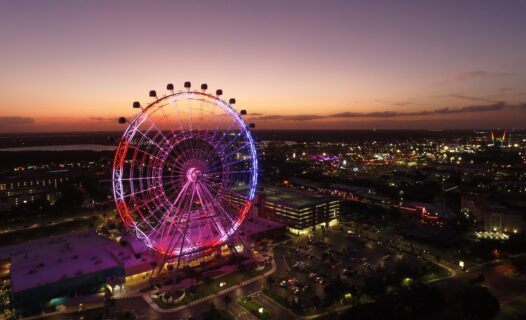
Embark on a culinary adventure in Orlando! From exquisite fine dining and vibrant food trucks to sustainable eats and lively festivals, discover the flavors that make Orlando a foodie's paradise.
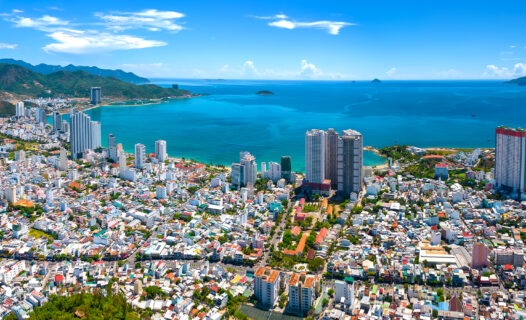
Dive into the ultimate Nha Trang shopping adventure! Explore bustling markets, chic boutiques, eco-friendly finds, and seasonal events in our detailed guide.
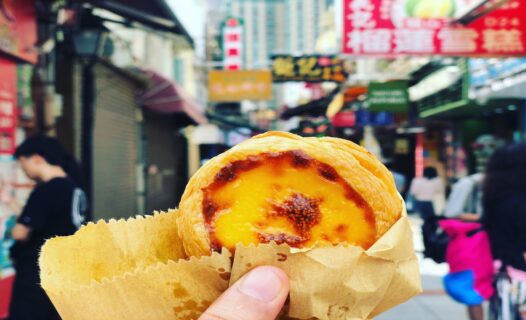
Embark on a culinary journey through Macau with our ultimate guide to its fusion flavors. Discover traditional dishes, insider dining tips, and vibrant food festivals that celebrate the best of Macanese cuisine.

Dive into our captivating 3-Day Dalat Itinerary to uncover Vietnam's highlands gem. From serene lakes to historic sites, embrace adventure & relaxation in Dalat.
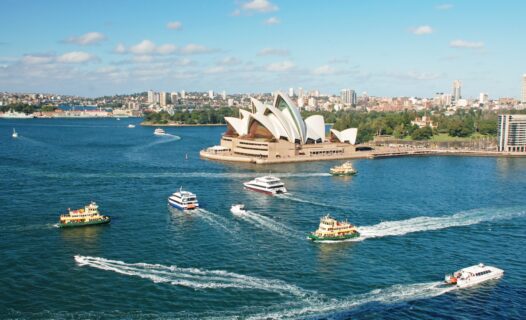
Embark on a captivating 7-day journey through Sydney, Australia. From iconic landmarks like the Opera House to the serene Blue Mountains and vibrant Darling Harbour, discover the best attractions the Harbour City has to offer.

Embark on a captivating 5-day journey through Istanbul, exploring historic wonders and cultural gems. Discover itineraries filled with majestic palaces, vibrant bazaars, and scenic cruises.
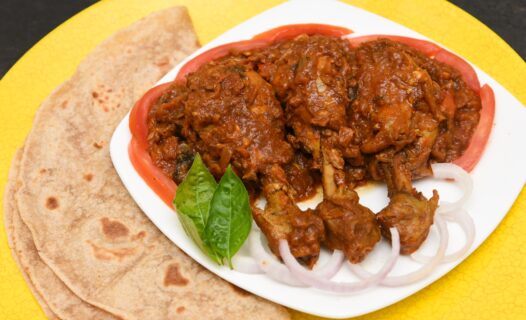
Embark on a delectable journey through Goa's culinary landscape with our comprehensive guide. Discover traditional Goan cuisine's fusion of flavors, from spicy vindaloos to sweet bebinca, and dive into local culture through markets, cooking classes, and sustainable dining.
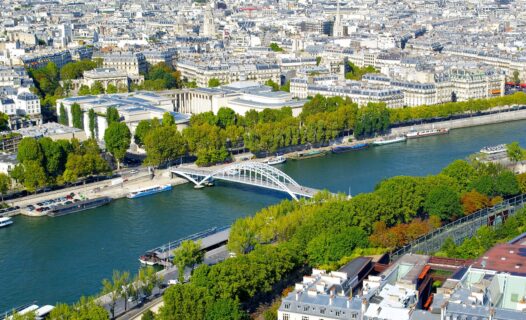
Discover the charm of Paris' arrondissements with our ultimate travel guide. From the historic heart of the city to hidden gems, find the perfect stay for every traveler.
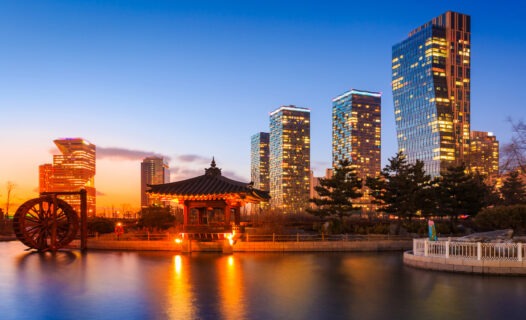
Uncover the best of Incheon in 5 days, from awe-inspiring historic sites to state-of-the-art modern marvels. Indulge in cultural tours, culinary delights, and breathtaking scenery.
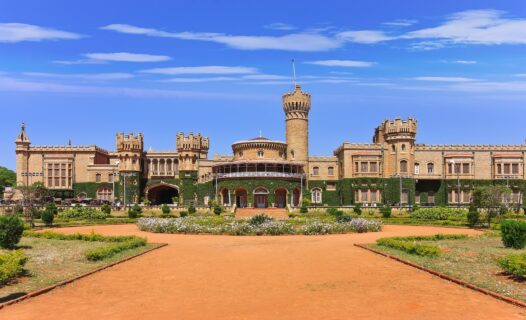
Dive into our 3 Days in Bangalore Itinerary to uncover the best of the Garden City. From royal palaces to tech hubs, enjoy a blend of culture, history, and nature.

Dive into our exclusive 7-Day Krabi Itinerary on Agoda’s Travel Guide. Discover pristine beaches, lush jungles, and cultural treasures in Thailand's paradise.

Embark on an extraordinary weekend getaway in Yilan with our curated itinerary. Discover lush landscapes, soak in natural hot springs, and indulge in local culinary delights.
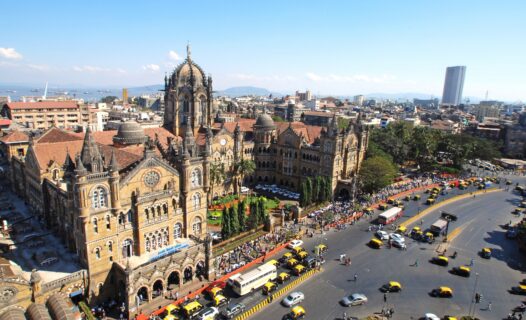
Dive into Mumbai's vibrant culture, history, and flavors with our detailed 3-day itinerary. Discover iconic landmarks, hidden gems, and culinary delights.

Embark on a 7-day journey through Hua Hin/Cha-am with our expertly crafted itinerary. Discover pristine beaches, royal palaces, and hidden gems.
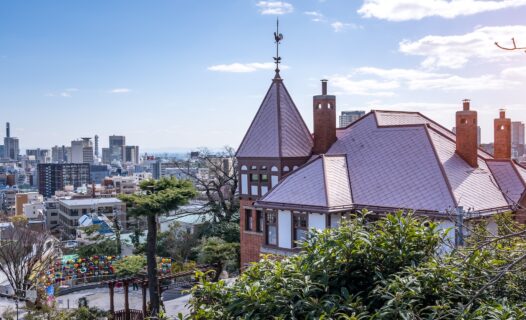
Embark on a captivating 3-day journey through Kobe, Japan. From historical landmarks to scenic beauty, discover the best of Kobe.
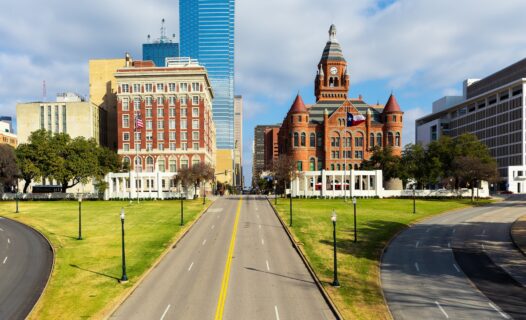
Uncover the best of Dallas with our exclusive 3-day itinerary. From iconic landmarks to hidden gems, discover why Dallas, TX, is a must-visit destination.

Discover the best of Hat Yai with our 5-day itinerary. From bustling markets to serene temples, experience the hidden gems of Southern Thailand.

Dive into our 5-day Nha Trang itinerary designed for adventure seekers! From island-hopping to scuba diving and cultural wonders, discover the best of Nha Trang with our expert guide.

Dive into our engaging 3-Day Macau Itinerary to uncover the vibrant mix of history, culture, and exhilaration in Asia's Vegas.
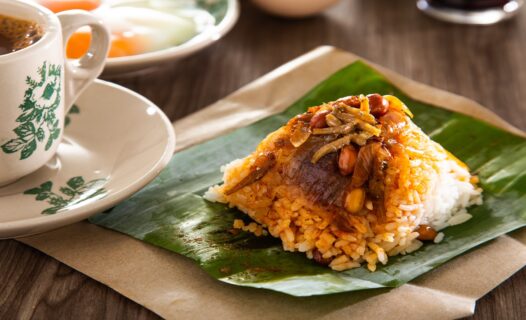
Dive into Ipoh's culinary paradise with our 3-day food lover's guide! Discover the best eats, hidden cafes, and cultural delights in Malaysia's gastronomic haven.

Unveil the magic of Orlando with our exclusive weekend getaway itinerary! From thrilling theme parks to serene gardens and vibrant nightlife, discover top attractions and local hidden gems.

An iconic Paris cabaret, the Moulin Rouge has a storied history stretching back over a century. Most notably, it was the birthplace of the iconic can-can dance. Visitors from around the world come every day to take in the spectacular show. Identified by its red windmill, the cabaret’s building is itself a popular tourist landmark. Whether you have tickets to a show or you are just stopping by on your way up the Montmartre hill, here is your guide to everything you need to know about the Moulin Rouge.
Visiting the Moulin Rouge, an iconic Paris landmark
The Moulin Rouge is located in the Pigalle district, at the very bottom of Montmartre. If you’re planning a visit to the Moulin Rouge, then the closest Paris Metro Station to get off at is Blanche Station on Metro Line 2. The station lies underneath the Boulevard de Clichy, which runs between the city’s 9th arrondissement and 18th arrondissement. It is just a quick, 1-minute walk to the Moulin Rouge from Blanche Station.
The Moulin Rouge red windmill
You’ll know the Moulin Rouge as soon as you see it. The building is instantly recognizable by its bright red exterior, and especially by the large red windmill on its roof. It may seem peculiar to see a windmill in the middle of the bustling city today, but the Moulin Rouge windmill actually harkens back to how the area would have looked in the past. Before it was the trendy Paris neighborhood that it is today, Montmartre was a small village with around 15 windmills dotted throughout it. These windmills were used to press grapes and grind flour. On top of being a nostalgic nod to a past era, the Moulin Rouge windmill is also painted red to signify passion and romance.
Paris’s first electric-powered building
Another feature of the Moulin Rouge building that you will likely notice is how well-lit the exterior is. While this serves to draw attention to the building in the modern day, the electrically powered facade had an even bigger impact back in the day, when it was one of the very first buildings in Paris to use electricity. Designed by Adolphe Leon Willette, the Moulin Rouge quickly became an emblem of the city. Every night when the shows began, the building lit up like a beacon to welcome guests and pique the interests of passersby.
Montmartre: A Parisian village inside the big city
Whether you are seeing a show at the Moulin Rouge or just stopping by for some sightseeing, a trip to this part of the city presents a great opportunity to check out Montmartre. This 430-foot-high hill in the northern section of Paris is full of traditional charm and famous for the gleaming white Sacre-Coeur Basilica that sits at its apex. You have the option of taking a funicular up to the top of the hill or stretching your legs a bit and enjoying the Montmartre area. This is a particularly great place in the city to do some shopping and pick up everything from brand name fashion to handcrafted local goods. One of the top shopping streets in the area is Rue Lepic.
A brief history of the Moulin Rouge
The Moulin Rouge first opened its doors on October 6, 1889. It was co-founded by two businessmen named Joseph Oller and Charles Zidler. Though no one could tell that the Moulin Rouge would eventually become the most famous cabaret in the world, Oller and Zidler very quickly proved that they had their fingers on the pulse of what the public was looking for. They envisioned the cabaret as a place where the Paris rich could come and let loose in a fashionable part of town so close to the iconic Montmartre hill.
The opening night atmosphere was rambunctious and festive. People from all walks of life showed up to celebrate. Businessmen, workers, the middle class, artists, and foreigners rubbed shoulders with one another and, side-by-side, discovered the extravagant new dance hall. They were treated to what must have been an unforgettable sight of the large dance floor, the galleries, and the dazzling mirrors. At that time, the Moulin Rouge also had a garden that housed a gigantic decorative elephant. Ladies could even take donkey rides! Opening night would be remembered as one big joyous party.
Influence and inspiration behind the Moulin Rouge
The Moulin Rouge was truly a product of its time. It was built during a period of optimism, peace, and industrial progress known as the Belle Epoque. Montmartre served as a hub for artists and the Eiffel Tower had just been constructed, further instilling a sense of progress and optimism among the people. Paris was also the host of the Universal Exhibition that year.
There was a cultural exuberance for new experiences and a general passion and light-heartedness permeated society. Social barriers were loosening as the industrial revolution promised a new and better life for everyone. This made people more open to artistic creativity than they had been during the previous period, which had been marked by war and ridged classicism. Many also point to the influence of a movement known as Japonism, which saw the introduction of Japanese artistic motifs into French art and into the earliest cabarets.
Growing popularity and the early years
It didn’t take long for the Moulin Rouge to explode in popularity. The public discovered and promptly embraced the new cancan dance, which was performed during the cabaret show’s grand finale. Its boisterous rhythm and somewhat racy moves certainly demanded attention, and the dance spread across Europe. The cancan actually grew out of an earlier dance known as the quadrille, which had been created in 1850 by famed dancer Celeste Mogador. The cancan likewise brought lasting fame to many of the women who performed the dance at the Moulin Rouge. One such woman was Louise Weber, who also went by the stage name La Goulue and who was also called the Queen of Montmartre. The Moulin Rouge itself was wildly successful during its first decade, each unforgettable night following the next in a flurry of performances.
Change and transition at the turn of the century
Unfortunately, the popularity of the Moulin Rouge waned after a few years and the last show of its early era was held in 1902. The building was turned into a concert theatre under the direction of M. Paul-Louis Flers and, until World War I, the main shows held there were operetta performances. The operettas were quite scandalous for their time. After World War I, the Moulin Rouge began hosting a new show called “New York- Montmartre,” a Broadway-style show that incorporated American elements and became popular among Parisians. However, the growing popularity of cinema once again caused interest in the shows to wane. During World War II, the Moulin Rouge went through another period of change and was transformed into a modern dance club.
A return to the glory days
It didn’t take long after World War II for the Moulin Rouge to begin regaining its former glory. In 1951, it was purchased by Georges France, who renovated the building in order to make it suitable for spectacular cabaret performances it had been so famous for half a century earlier. The “new” Moulin Rouge was inaugurated by the French president Vincent Auriol. This was the first step towards establishing the cabaret as a place where anyone could come to enjoy themselves for the evening. The cabaret shows resumed and the building was even fitted with a kitchen. This marked the beginning of the dinner show and quickly turned the Moulin Rouge into one of the city’s most popular attractions once again. People flocked to it from all over the world. Even Elvis Presley visited on multiple occasions.
Moulin Rouge in the modern day
The beloved cabaret was back and in a big way. In 1962, it came under the management of Jacki Clerico. Among his most memorable contributions to the cabaret was the installation of a giant aquarium where nude dancers could swim around like mermaids in an aquatic ballet. Clerico is also known for starting the tradition of selecting only names that begin with the letter “F” for the cabaret’s shows, such as Frou Frou, Fantastic, and Formidable. The Moulin Rouge had truly cemented its place in history and celebrated its 100th birthday in 1988 with a large party that included everyone from famous show business stars to crowned heads of state. Today, the cabaret proudly welcomes almost 600,000 visitors every year.
The Moulin Rouge show
Feerie has been the resident stage show at the Moulin Rouge since December 23, 1999, and it remains as well-loved today as it was when it first premiered. Each show lasts for about two hours and it is a marvelous spectacle to behold, sweeping guests away to a magical world for the evening. There are five scenes in total, each with its own unique story and theme.
The Feerie performance is put on by a troupe of 80 talented dancers from around the world – 60 women and 20 men – in some of the most visually stunning costumes you will ever see, each one crafted in a famous Parisian workshop. Over 1,000 traditional costumes featuring rhinestones, sequins, and feathers are used during the performance. The incredible sets, designed by Italian artists and adorned in shimmering colors, are also a visual treat. All of the choreography is performed to the show’s original score, which was recorded by a grand total of 60 chorus singers and 80 musicians.
It all begins when the theatre lights dim and the curtains are raised, revealing the entire troupe of Moulin Rouge dancers who immediately enthrall the audience with their energy and enthusiasm. The first scene is called “The Moulin Rouge Today and Yesterday.” The second scene, titled “The Pirates,” transports the audience to Indonesia, where they are introduced to a priestess, invited to attend a Governor’s ball, and witness to an epic love story. During the third scene, “At the Circus,” you are whisked away to a wild and colorful circus complete with acrobats, clowns, jugglers, and a closing parade of dancers. Next, the audience is taken on a historical journey in a scene called “Moulin Rouge from 1900 to…” This scene is a tribute to Parisian women throughout the years and features the famous cancan dance. The final scene is devoted to exclusive international acts by top performing artists from around the world.
Moulin Rouge tickets and showtimes
The Moulin Rouge puts on two shows every single night of the week, the first one at 9 p.m. and the second at 11 p.m. You can also choose to book a dinner and a show, in which case dinner is served at 7 p.m. and attendees then view the 9 p.m. performance. It is recommended that guests arrive half an hour to 15 minutes prior to the show or dinner time. Tickets can be easily booked through the Moulin Rouge website, and prices vary based on performance time and date. The 11 p.m. show is the most affordable option and the dinner and show is the most expensive.
Moulin Rouge ticket prices
• Dinner and show: Ticket prices range from 180€ to 195€
• 9 p.m. show: Ticket prices range from 107€ to 135€
• 11 p.m. show: Ticket prices range from 77€ to 112€
When booking tickets, you will have the option to purchase a VIP rather than a regular show access pass for an extra charge. For both the 9 p.m. and the 11 p.m. show, a VIP ticket will grant you free cloak room access, premium seating, half a bottle of champagne, macaroons, and a gift. VIP tickets for the dinner and show also include free cloak room access, macaroons, and a gift, as well as a welcoming bottle of rose, special table wear, and a half bottle of superior champagne for the show.
Moulin Rouge VIP ticket prices
• Dinner and show: Ticket prices range from 420€ to 430€
• 9 p.m. show: Ticket prices range from 210€ to 230€
• 11 p.m. show: Ticket prices range from 210€ to 220€
Children as young as six years old may attend the Moulin Rouge show in Paris, and discounted ticket prices are also available for children younger than 12.
What to expect at the Moulin Rouge
As you are getting ready for a Moulin Rouge show, note that there is a dress code that must be followed. Jackets and ties are recommended, but it is not strictly a black-tie affair. Guests are asked to dress smartly and avoid casual clothing such as shorts, sportswear, leisurewear, flip-flops, and the like. Please also note that you are not allowed to take pictures or video at any time, neither of the show nor of the hall in general, so take your selfies and other snapshots before you enter the building! There will also be a team of professional photographers inside to snap your picture if you like.
The Moulin Rouge is a very alcohol-friendly establishment. In fact, it is the largest consumer of champagne in the world, serving over 240,000 bottles every year (a feat that has been noted in the Guinness World Records). If you purchase a VIP ticket, then you will be provided with a generous amount of alcohol for yourself. Of course, guests are asked to consume with care and to be mindful of their own limits.
The number one thing to expect at a Moulin Rouge show is that you will be entertained by the skills and the energy of the talented dancers, as so many others have been through the years. If you’re planning a trip to Paris and you’re looking for a can’t-miss artistic and cultural experience to add to your itinerary, then catching a show at the Moulin Rouge should be at the top of your list.
Check In to a hotel or apartment near Blanche Station
Step Out to Moulin Rouge
You may also like
